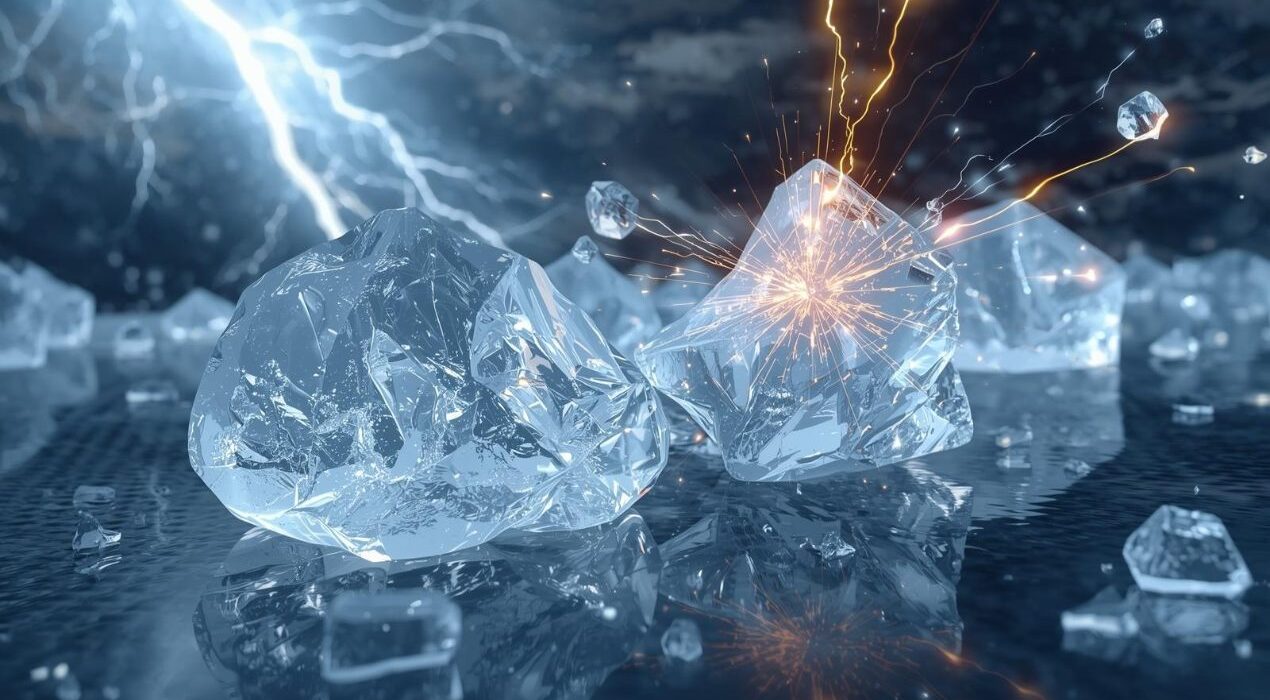Ice, one of Earth’s most familiar materials, has revealed a surprising hidden property: it can generate electricity when bent or deformed. This effect, known as flexoelectricity, could help explain how lightning forms and inspire new technological applications.
An international team from the Universitat Autònoma de Barcelona’s ICN2, Xi’an Jiaotong University in China, and Stony Brook University in New York has shown for the first time that ordinary ice is flexoelectric. Their study, published in Nature Physics, demonstrates that ice creates an electrical charge under uneven stress.
“We discovered that ice generates electric charge in response to mechanical stress at all temperatures. In addition, we identified a thin ‘ferroelectric’ layer at the surface at temperatures below -113ºC (160K). This means that the ice surface can develop a natural electric polarization, which can be reversed when an external electric field is applied—similar to how the poles of a magnet can be flipped,” explained Dr. Xin Wen of ICN2. “The surface ferroelectricity is a cool discovery in its own right, as it means that ice may have not just one way to generate electricity but two.”
This dual capability places ice in the same league as advanced electroceramics, such as titanium dioxide, widely used in sensors and capacitors.
The research also has profound implications for understanding thunderstorms. Lightning occurs when ice particles in clouds collide, creating charge separation. Until now, the mechanism behind this charging was unclear, since ice is not piezoelectric. The new findings reveal that when ice particles bend or deform irregularly, they can indeed generate electrical potential — a process that aligns with storm observations.
According to ICREA Prof. Gustau Catalán, who led the study, the discovery could pave the way for novel devices that use ice as an active material, particularly in cold environments.
Ordinary Ice Found to Generate Electricity, Unlocking Clues to Lightning and Future Tech






